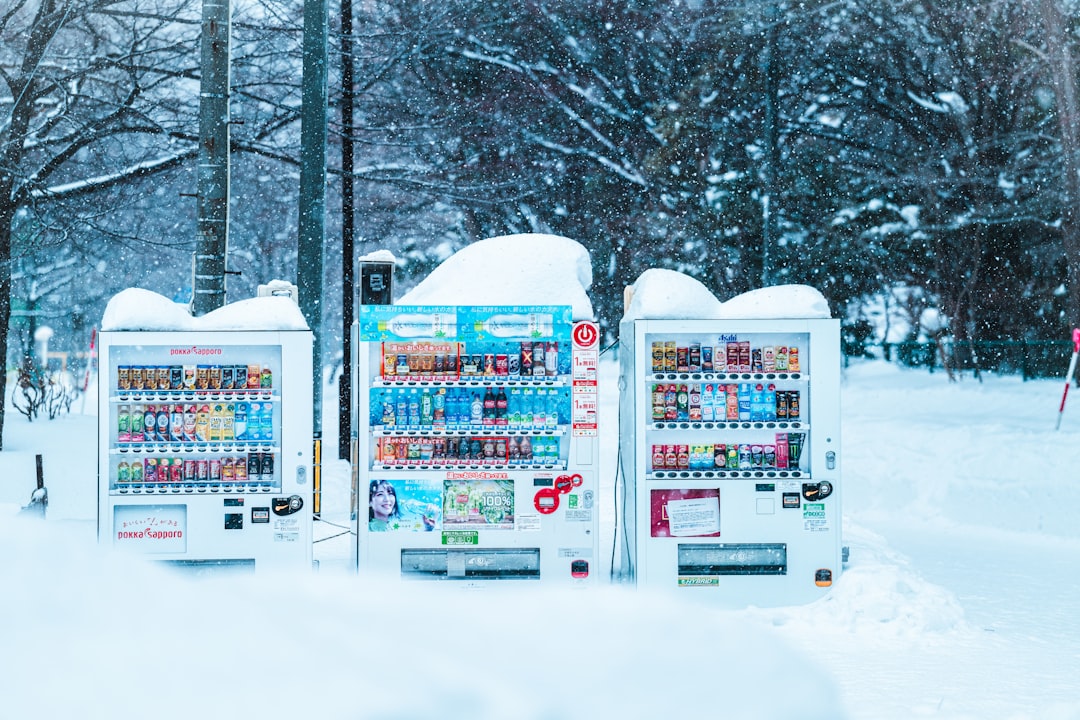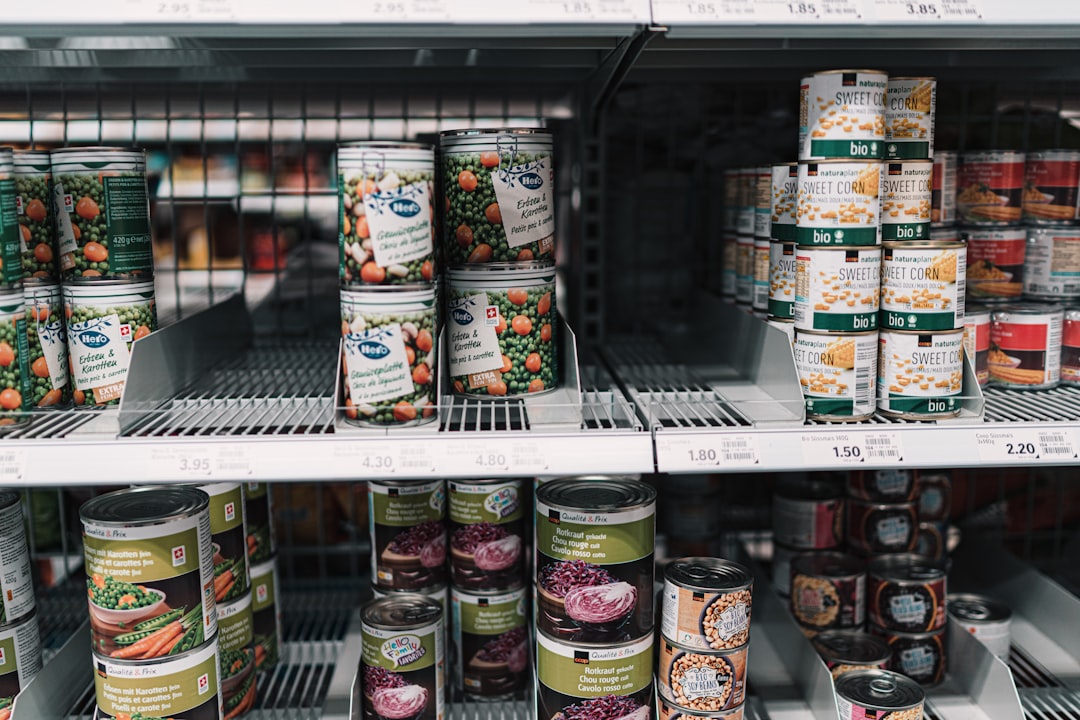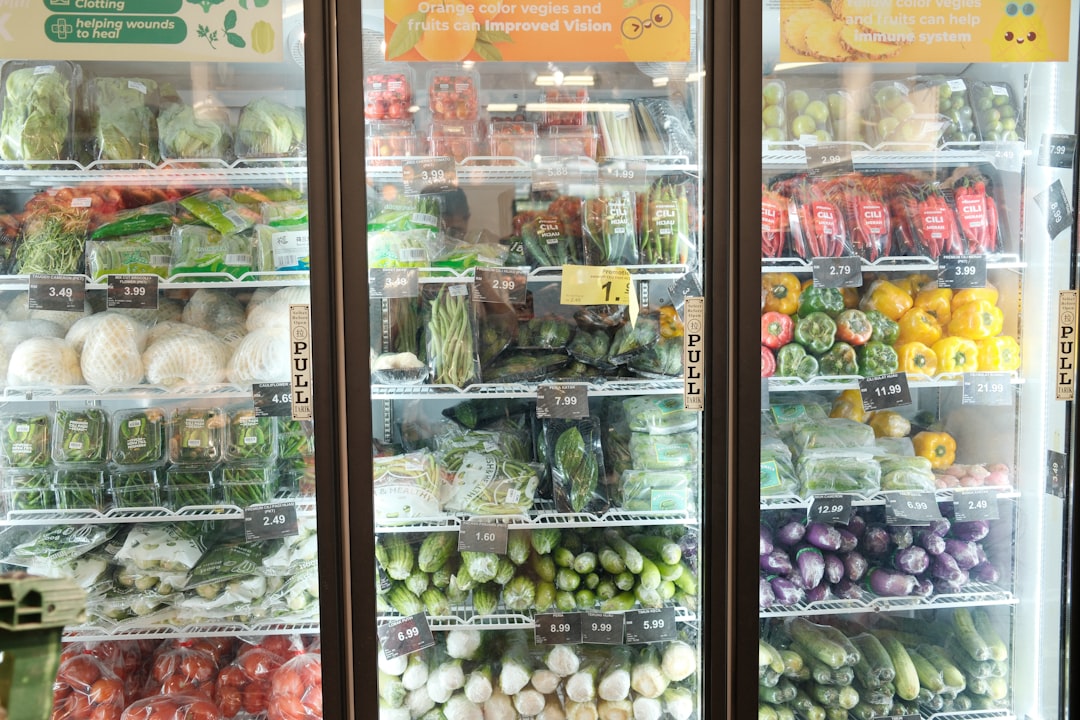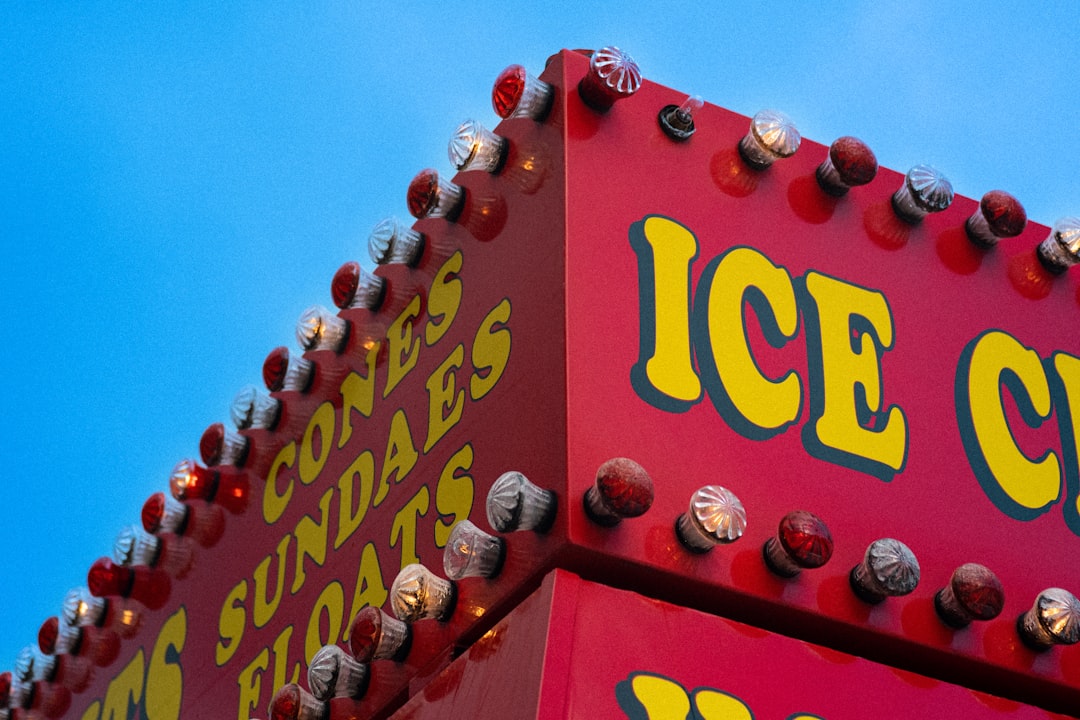

Engage prospects with a scan and streamline customer engagement with FREE QR code marketing tools by Sona – no strings attached!
Create a Free QR CodeFree consultation

No commitment

Engage prospects with a scan and streamline customer engagement with FREE QR code marketing tools by Sona – no strings attached!
Create a Free QR CodeFree consultation

No commitment
In today’s digitally driven world, QR codes have evolved from novelty to strategic powerhouse in bridging offline engagement with online action. For frozen food manufacturers, QR codes represent a practical response to mounting challenges around food traceability, regulatory compliance, and consumer engagement, providing solutions without introducing operational complexity or reliance on dedicated apps.
Consumer expectations have shifted significantly, demanding transparent sourcing, clear food safety information, and immediate access to accurate product data. Combined with increasing regulatory pressure for robust traceability and food labeling regulations, as well as growing competition, the cost of missed opportunities such as untracked high-value prospects or lost engagement signals can be substantial. QR codes sit at the intersection of compliance, marketing, and customer service, helping bridge these gaps and tackle the real pain points facing modern manufacturers.
By embedding QR code solutions into food packaging, frozen food companies not only ensure accurate data capture and stronger compliance but also create interactive experiences that foster consumer trust. This article explores how QR technologies address critical industry challenges like lack of visibility into anonymous intent or outdated segmentation while enabling new layers of insight and differentiation in a crowded marketplace.

Many frozen food manufacturers still rely on manual documentation and static packaging, which creates friction for consumers seeking sourcing or safety information and makes tracking real engagement nearly impossible. Paper-based batch logs, printed brochures with outdated details, and hotline numbers on packaging add complexity for shoppers and slow down internal response times. The result is a lack of actionable data, missed follow-ups, and a disconnect between offline product interaction and online marketing.
Replacing analog processes with QR-powered workflows changes the equation. A single scan can deliver an up-to-date ingredients list, allergen notices, sustainability reports, and batch-level traceability in seconds. On the back end, modern QR platforms such as Sona QR capture scan data, sync it to your CRM, and automate follow-up journeys that nurture both consumers and B2B buyers. The goal is a closed loop from first scan to conversion, built on data you can trust.
Modern QR platforms with integrated journey tracking and customer data enrichment allow frozen food teams to connect the loop between first scan, ongoing engagement, and eventual conversion. Your labels become dynamic gateways that update in real time, serve distinct audiences, and meet evolving regulatory demands without reprinting.

Frozen food manufacturers face persistent pain points because packaging is one of the few touchpoints after distribution. Static labels limit the ability to update crucial information or respond in real time. When supply chain events evolve or regulations change, printed details cannot keep up. This disconnect creates compliance gaps and severs consumer insights from daily operations, echoing the broader labeling debate in the food industry. When engagement goes under the radar, high-potential feedback and signals remain invisible, leading brands to miss opportunities for education, upsell, or loyalty.
QR codes create an adaptive, always-on bridge between physical products and digital services. In the freezer aisle, at home, or in a trade environment, a scan turns curiosity into a trackable action. Manufacturers can maintain a single version of the truth for ingredients and allergens, roll out recall information instantly, and deliver tailored content by region or batch. Each interaction produces data that improves operations and informs marketing decisions, not just clicks on a generic website.
The right QR strategy turns every frozen product into an adaptive online touchpoint that connects marketing, compliance, and customer interaction. You reduce fragmentation and create a consistent experience from shelf to screen.

A lack of standardization and reliance on generic analytics tools often produces incomplete or unusable data. Choosing the right QR format and destination for each objective ensures scans lead to high-value actions, whether the goal is compliance, education, or conversion. In frozen food, formats should favor immediacy, transparency, and ease of use, with dynamic codes used when content may change.
Dynamic codes are vital for regulated information and seasonal campaigns. Static codes can serve evergreen assets, for example a brand homepage. Most manufacturers benefit from a mixed strategy that pairs dynamic codes for SmartLabel pages or recall flows with static codes for long-lived materials.
Dynamic QR code solutions adapt to evolving compliance needs and keep content current as regulations or campaigns change. Centralizing management in a platform like Sona QR ensures consistency, version control, and accurate analytics across all formats.

Frozen food teams sometimes struggle to identify where packaging or touchpoints could yield the most value. The risks are familiar: underutilized packaging space, untracked retail intent, and missed B2B engagement across distributors and buyers. A scan-first mindset helps teams map codes to goals, so every placement serves a measurable purpose.
Start by inventorying every surface where your audience interacts, including production and logistics. Then assign a code and a destination that aligns with the job to be done. For consumers, lead with value such as recipes or allergen clarity. For B2B partners, emphasize accountability, delivery confirmations, and specification sheets.
Strategically mapping QR placements to business processes ensures maximum return on every touchpoint. Avoid generic codes without context; pair each code with an explicit promise and a useful next step.

In frozen food, generic campaigns often miss important engagement signals, for example when a shopper is primarily interested in allergen safety versus coupons. QR codes solve this with specific use cases tied to the buyer journey. Each use case both delivers value and captures intent that you can act on later.
Manufacturers should focus on a small set of high-impact applications that can be deployed consistently across SKUs and channels. Over time, expand as analytics reveal new patterns or needs. The key is to prioritize utility for the end user to earn frequent scans.
These use cases replace static labels with living content, making packaging a two-way channel. They also create measurable outcomes such as higher scan-to-subscription rates, faster recall compliance, and increased basket size through recipe-linked cross-sells.
Traditional campaigns often fail to distinguish between engaged buyers and passive traffic. Without account-level insight, marketing teams struggle to identify who cares about traceability, who wants coupons, and who is exploring sustainability commitments. QR codes solve this by capturing intent at the moment of interest and routing it into segments for targeted follow-up.
A robust segmentation framework uses different codes and destinations across the journey. With Sona QR, each scan can be tagged by SKU, channel, and behavior, then synced to CRM and ad platforms for automated nurturing. The result is precise retargeting informed by real behavior, not assumptions. Learn how to operationalize intent data to drive higher-impact campaigns.
Modern platforms automate CRM sync and cross-channel retargeting, helping manufacturers re-engage high-fit prospects and reduce lost revenue from overlooked interactions. The richer your tags, the smarter your remarketing.
Disconnected marketing efforts create fragmented experiences and lost engagement. Frozen food brands operate across packaging, retail displays, paid media, and B2B events, so scan data must flow into a unified system. QR codes tie these channels together by capturing context at the moment of interaction, then feeding that data into the tools you already use.
Plan your integration by mapping each channel to a clear role in the journey. Packaging builds trust and education, freezer signage drives trial and coupons, and post-purchase inserts nurture loyalty. With Sona QR, you can manage codes centrally, view performance by channel, and orchestrate follow-ups across email, SMS, and ads.
Unified dashboards centralize analytics and workflows, improving decision-making and collaboration across marketing, sales, quality, and regulatory teams. The result is a consistent brand experience that meets customers where they are.
Manufacturers often struggle with inconsistent execution, unclear metrics, and low scan rates due to poor process design or incomplete tracking. A rigorous checklist provides structure and accountability, ensuring each campaign launches with a clear purpose, reliable analytics, and strong user experience.
Below is a practical framework you can adapt to your team and tooling. Use it to move quickly while maintaining quality standards and audit-ready documentation across SKUs and channels.
Define the business outcome before you design any asset. For frozen food, common campaign goals include registering customers for recall alerts, educating shoppers on allergens, and driving trial with recipe or coupon content. Align the destination to the promise on the package so scanners get exactly what they expect.
Collaborate with cross-functional teams to lock in success criteria. For example, a recall-readiness campaign might aim for a specific percentage of batch scans in a region, a reduction in support calls, and faster time to notify. Document owners, timelines, and measurement methods to avoid ambiguity.
Select static codes for fixed destinations that rarely change, such as a brand history page. Use dynamic codes for experiences that may require updates, personalization, or ongoing A/B testing, such as SmartLabel pages, campaign landing pages, or seasonal recipes. Dynamic codes also support short links and allow you to correct issues without reprinting. Learn more about static vs. dynamic codes.
Ensure your platform supports analytics, identity resolution, and CRM integrations. Sona QR lets you manage both static and dynamic codes, add UTM parameters, and centralize reporting. This foundation is essential for retargeting and long-term optimization.
Design with the freezer aisle in mind. Use high-contrast codes, include a framing element, and place a benefit-driven call to action nearby, for example, “Scan for cooking tips” or “Check batch sourcing.” Codes should be at least 0.8 inches on packaging and larger on signage so they scan reliably from a comfortable distance. For practical placement tips, see this guide to QR codes on food packaging.
Test in real conditions. Validate scannability under store lighting, through freezer-door glass, and on curved or frosted materials. Test with multiple devices and operating systems. Catching issues early prevents costly reprints and protects user trust.
Roll out codes on packaging, freezer signage, displays, recipe cards, trade show materials, and shipping cartons. Match placements to the intended journey stage. For example, in-store displays are ideal for awareness and trial, while on-pack codes serve consideration and education, and post-purchase inserts support loyalty.
Coordinate with retail partners and distributors. Provide a brief guide that explains the value proposition, the intended user flow, and best practices for shelf placement and messaging. Training improves adoption and increases scan rates.
Instrument every destination with UTM parameters so you can attribute performance by SKU, store, region, and media type. Use Sona QR to monitor scans by time, device, and location, then measure conversion events such as email sign-ups, coupon redemptions, and feedback submissions. Build dashboards that summarize trends and outliers.
Run experiments continuously. A/B test calls to action, landing page layouts, and recipe themes. Improve load speed and accessibility. Translate content for priority languages in each region. Optimization compounds over time and can double or triple scan-to-action rates.
Finally, validate the campaign under real-world conditions before full rollout. Account for lighting, packaging materials, freezer-door reflections, and store traffic patterns to catch issues that lab testing may miss.
Siloed analytics prevent frozen food brands from connecting the dots between offline engagement and digital outcomes. A shopper scans a code, but the data never reaches CRM, media platforms, or revenue reporting. This gap makes it difficult to attribute sales lift, identify churn risks, or justify investments in placements and creative.
A tightly integrated QR analytics program closes the loop. By stitching scan data to web sessions, form fills, and sales events, you can calculate true ROI, discover which content drives action, and recognize the segments that need attention. The objective is not only to know how many people scanned, but also to understand what those scans meant for compliance, customer experience, and revenue.
Data-driven platforms help teams shift from generic reporting to actionable intelligence. Sona QR captures real-world engagement; Sona connects that engagement to pipeline and revenue through identity resolution and multi-touch attribution.
QR initiatives often stall after pilot phases due to inconsistent execution, limited analytics, and weak internal alignment. Scaling requires standard operating procedures, training for retail partners, and automation that turns scans into outcomes without manual effort. The right mix of process and creativity keeps engagement fresh while preserving data quality.
Prioritize tips that align with your physical media and buyer journey. For frozen foods, that means on-pack clarity, freezer-friendly design, and value-rich destinations like recipes, safety, and sustainability. Supplement with trade and DTC programs that extend reach.
Comprehensive platforms like Sona QR centralize data, standardize workflows, and integrate with your marketing stack, making it easier to scale success and respond to new requirements.
Many frozen food brands have yet to realize the full potential of QR codes. Skepticism often comes from past experiences with static URLs that produced little data or from concerns about consumer adoption. The current reality is different. Modern dynamic codes, strong calls to action, and integrated analytics deliver measurable results while meeting compliance needs.
Real-world implementations demonstrate that when a code promises clear value and leads to mobile-friendly content, shoppers respond. Teams can attribute outcomes to the physical assets that drove them and use learnings to refine both creative and placement.
Ideas to try next include rotating sustainability spotlights by season, limited-time recipe unlocks with chef partners, QR-linked loyalty sign-ups in DTC shipments, and interactive freezer-door displays that pair a code with a short video loop.
What was once optional is now essential for frozen food brands navigating regulatory requirements and rising expectations for transparency and personalization. A QR code strategy is more than a technical upgrade. It is a structural solution that connects packaging to digital experiences, replaces guesswork with analytics, and turns every scan into a potential customer relationship.
When properly implemented, QR technology delivers three powerful advantages that compound over time. It keeps compliance and traceability up to the minute, it builds rich engagement datasets for smarter segmentation, and it creates a consistent cross-channel brand experience from shelf to screen.
With Sona QR, you can generate dynamic codes, manage destinations, and connect scan data to your CRM and attribution models. Sona.com extends that foundation with identity resolution and multi-touch reporting so you can tie scans to revenue. Start creating QR codes for free.
QR codes have revolutionized the frozen food manufacturing industry by transforming traditional packaging into interactive, data-driven marketing tools. They enable manufacturers to enhance customer engagement, streamline product information delivery, and boost brand loyalty—all while capturing valuable insights to optimize marketing efforts. Imagine instantly connecting consumers to cooking tips, nutritional details, or exclusive promotions right from the package, turning every scan into a meaningful interaction that drives repeat purchases.
With Sona QR, frozen food manufacturers can effortlessly create dynamic, trackable QR codes that update in real time without the need for costly reprints. This means you can tailor campaigns on the fly, measure exactly which packaging elements inspire action, and link every scan directly to sales performance. No more guesswork—just smarter packaging that converts interest into revenue.
Start for free with Sona QR today and unlock the full potential of your frozen food packaging, turning every scan into a loyal customer and every package into a powerful marketing asset.
QR codes provide batch-level sourcing, production dates, and transit condition information instantly through a scan, supporting regulatory reporting and strengthening consumer trust with transparent supply chain data.
QR codes enable up-to-date information delivery, interactive consumer experiences, improved compliance, real-time updates without reprinting, measurable engagement data, and create a consistent brand experience from shelf to screen.
QR codes centralize recall information, allow instant updates to regulatory disclosures, automate recall flows for consumers, and support audit readiness by providing traceability and allergen details dynamically.
Consumers can access ingredients lists, allergen notices, batch-level traceability, sustainability reports, cooking videos, recipe guidance, recall updates, and feedback forms all through QR code scans.
Manufacturers can assign unique QR codes per SKU or batch, integrate scan data with CRM and analytics platforms, automate follow-ups, track engagement by location and product, and use QR codes on packaging, shipping cartons, and B2B documents to improve accountability and traceability.
Use Sona QR's trackable codes to improve customer acquisition and engagement today.
Create Your FREE Trackable QR Code in SecondsJoin results-focused teams combining Sona Platform automation with advanced Google Ads strategies to scale lead generation

Connect your existing CRM

Free Account Enrichment

No setup fees
No commitment required

Free consultation

Get a custom Google Ads roadmap for your business






Launch campaigns that generate qualified leads in 30 days or less.
